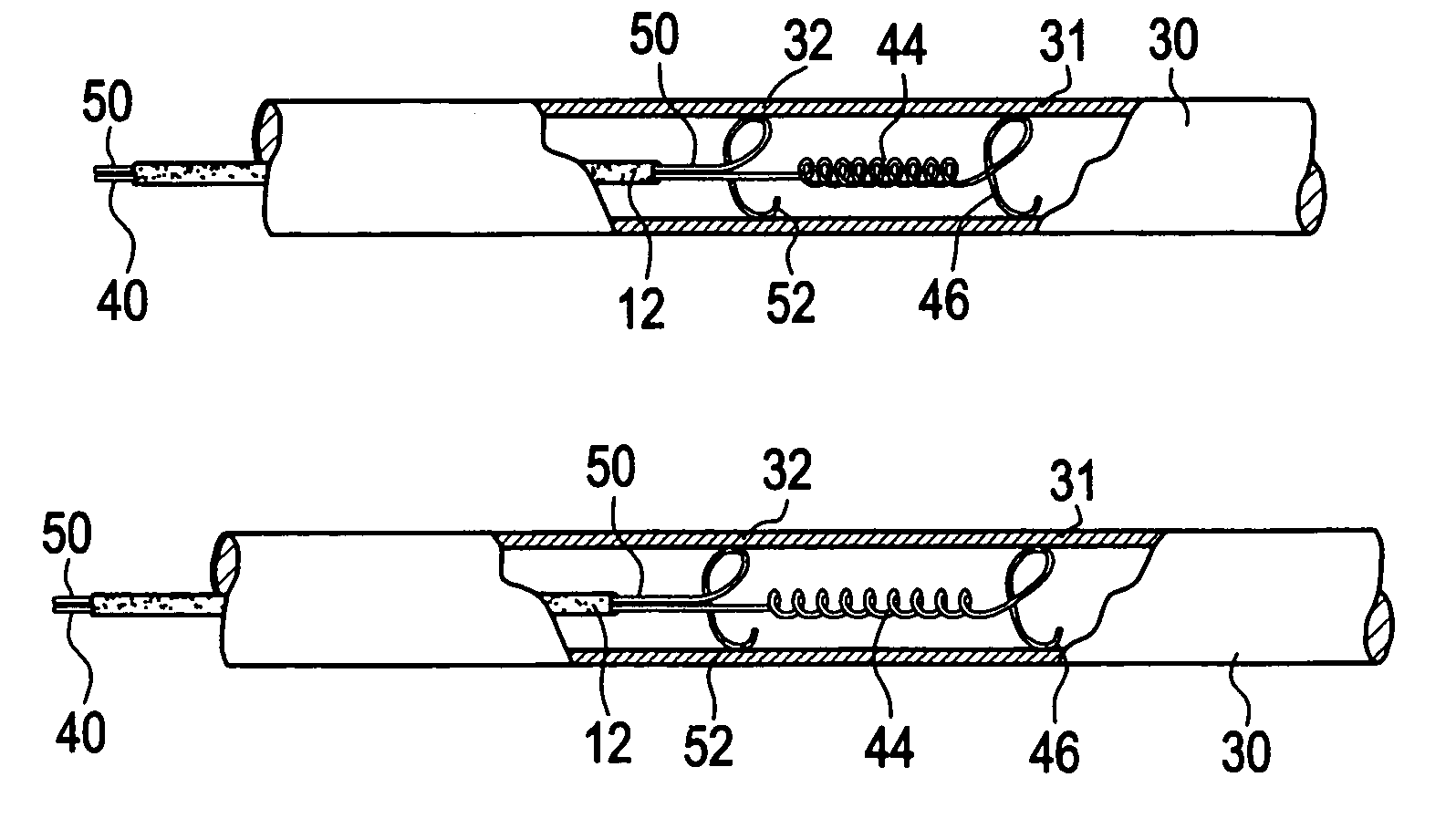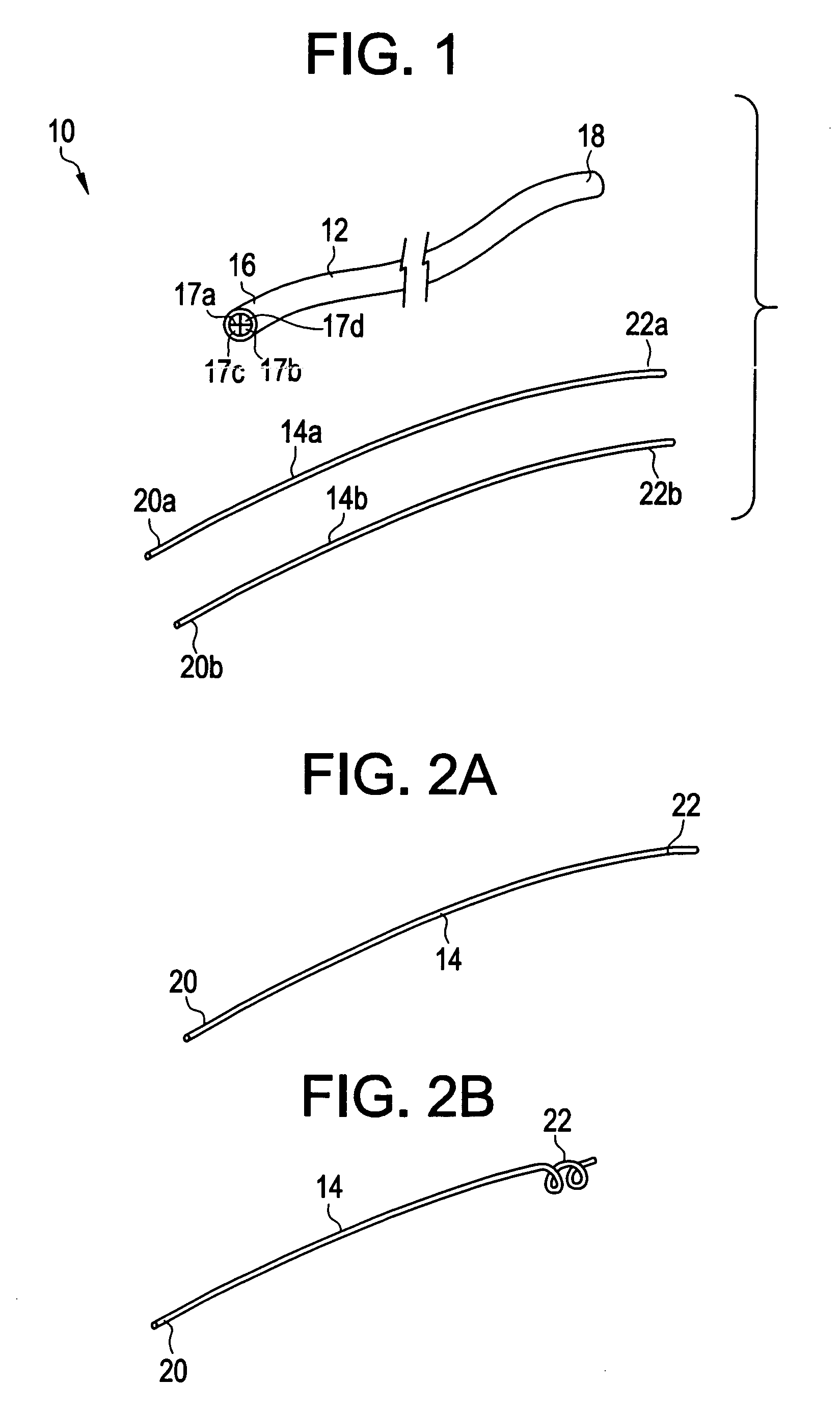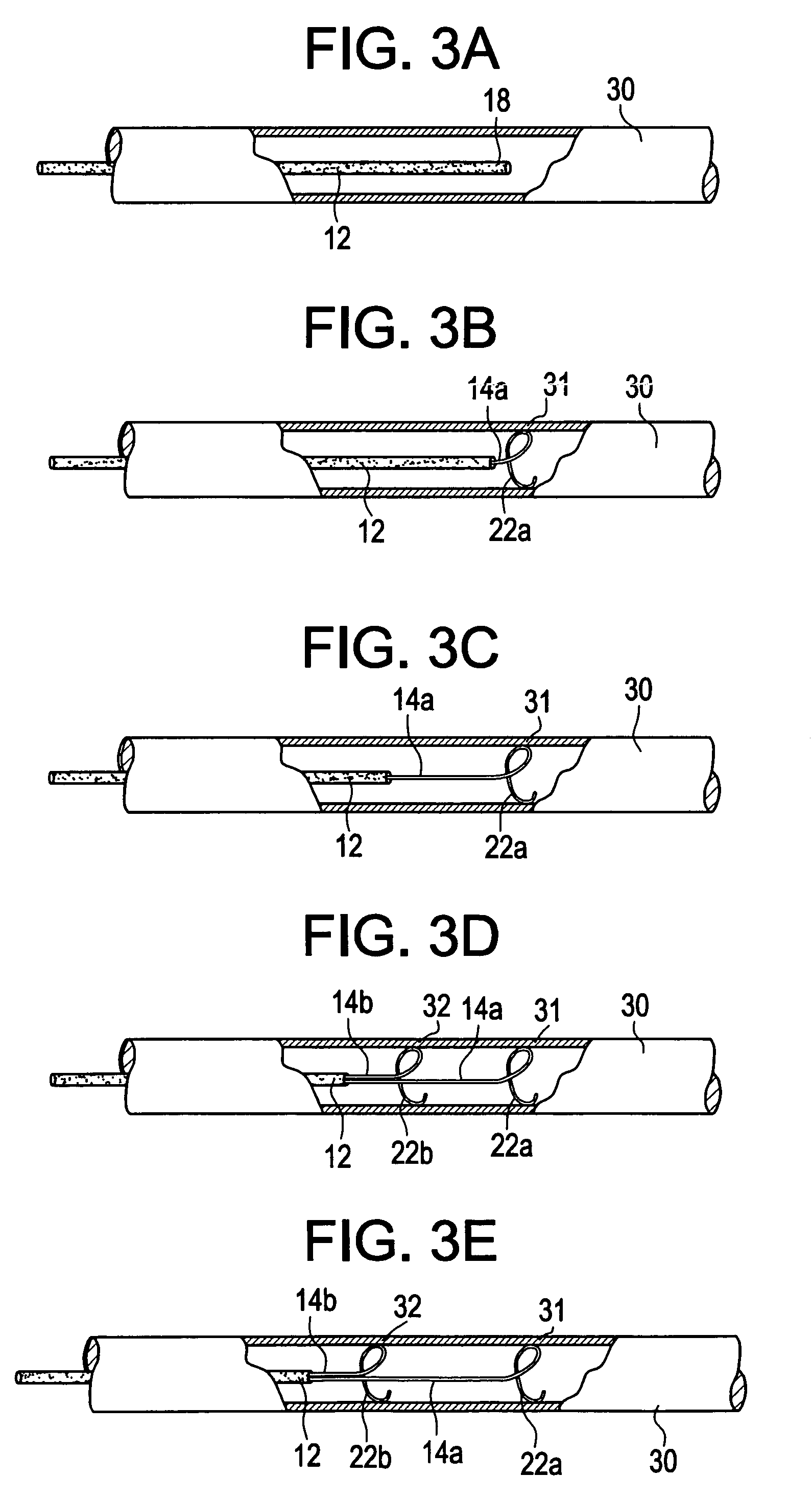Intravascular device and method for axially stretching blood vessels
a technology of axial stretching and intravascular device, which is applied in the field of autologous grafts, can solve the problems of difficult to obtain sufficient venous tissue for repairing occluded arteries, difficult wound healing, and failure of saphenous veins in less than five years, and achieve the effect of stimulating vessel growth
- Summary
- Abstract
- Description
- Claims
- Application Information
AI Technical Summary
Benefits of technology
Problems solved by technology
Method used
Image
Examples
Embodiment Construction
[0032]It is known that smooth muscle cells, which dominate the media, the major load bearing layer of the arterial wall, proliferate and increase their production of extracellular matrix in response to mechanical stimulation. It was discovered that this knowledge could be advantageously applied to create an autologous graft of appropriate diameter for coronary bypass or other vascular graft application using an intravascular distension device to stimulate angiogenesis.
[0033]The distension device secures the donor blood vessel at different points within the vessel and then distends or stretches the vessel between those points to form an elongated portion. The elongated portion can then be excised for use as a vascular graft. The devices and methods described herein can used to make allogeneic and xenogeneic vascular grafts, as well as the more preferred autogeneic vascular grafts.
The Devices and Methods of Operation
[0034]The device includes a stretching mechanism that can be attached...
PUM
 Login to View More
Login to View More Abstract
Description
Claims
Application Information
 Login to View More
Login to View More - R&D
- Intellectual Property
- Life Sciences
- Materials
- Tech Scout
- Unparalleled Data Quality
- Higher Quality Content
- 60% Fewer Hallucinations
Browse by: Latest US Patents, China's latest patents, Technical Efficacy Thesaurus, Application Domain, Technology Topic, Popular Technical Reports.
© 2025 PatSnap. All rights reserved.Legal|Privacy policy|Modern Slavery Act Transparency Statement|Sitemap|About US| Contact US: help@patsnap.com



